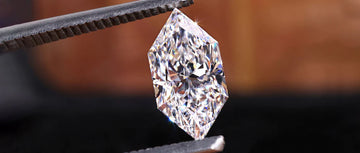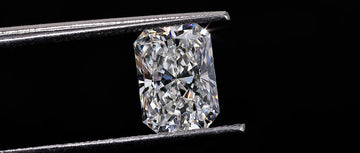Moissanite, lab-grown diamonds, and natural diamonds each offer unique qualities. Moissanite, a silicon carbide gemstone, stands out with exceptional brilliance and fire, often outshining diamonds. Lab-grown diamonds, while chemically identical to natural diamonds, offer eco-friendly and cost-effective alternatives. Natural diamonds, treasured for centuries, are valued for their rarity and traditional appeal. Understanding these differences helps in making an informed choice, whether seeking sustainable luxury or timeless natural beauty. Choose based on personal values, whether it's environmental consciousness or a preference for natural rarity.


 +91 9265051773
+91 9265051773
 Virtual Appointment
Virtual Appointment
 log in
log in







 Engagement Ring
Engagement Ring  Anniversary Rings
Anniversary Rings Solitaire Rings
Solitaire Rings Halo Rings
Halo Rings Men's Ring
Men's Ring Toi Moi Ring
Toi Moi Ring Three Stone Rings
Three Stone Rings Nature Inspired Rings
Nature Inspired Rings Rose Cut Diamond Rings
Rose Cut Diamond Rings Fancy Color Rings
Fancy Color Rings Antique Cut Diamond Rings
Antique Cut Diamond Rings Wedding rings
Wedding rings All Lab Grown Diamond Ring
All Lab Grown Diamond Ring Engagement Ring
Engagement Ring  Three Stone Rings
Three Stone Rings Daily Wear
Daily Wear Fancy Color Rings
Fancy Color Rings Antique Cut Diamond Rings
Antique Cut Diamond Rings Earrings
Earrings Bracelet
Bracelet Pendent
Pendent Necklace
Necklace Rings
Rings Earrings
Earrings All Rainbow Collection
All Rainbow Collection Tennis chain
Tennis chain Custom Pendent
Custom Pendent Custom Ring
Custom Ring Custom Teeth Grillz
Custom Teeth Grillz Round
Round Oval
Oval Cushion
Cushion Marquise
Marquise Pear
Pear Emerald
Emerald Heart
Heart Princess
Princess Rose Cut
Rose Cut Radiant
Radiant Antique Cut
Antique Cut Regular Cut
Regular Cut Cushion
Cushion Men's Ring
Men's Ring Bridal Sets
Bridal Sets




